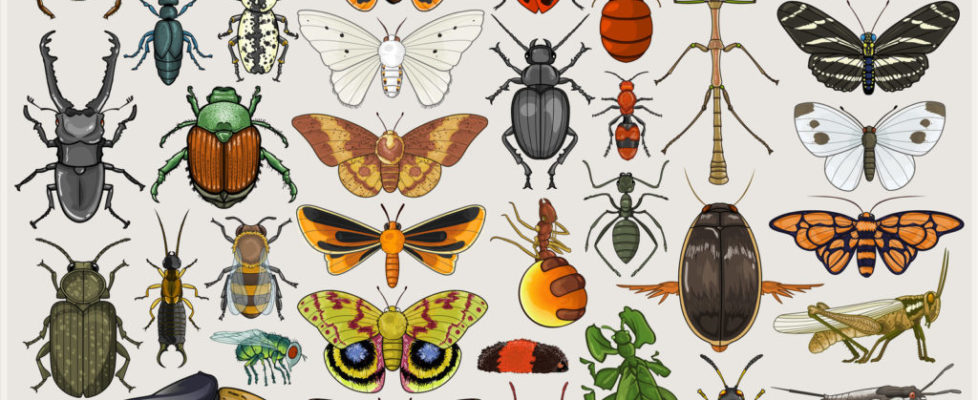Tiny Creatures, Epic Journeys
On a recent visit to the South Carolina coast, my wife and I were walking through a grassy field on the path to our favorite beach. Before we even reached the sand, though, we saw something unexpected: Butterflies. Clouds of butterflies in, on, and around the flowering bushes behind the dunes.
A few were Monarchs in the midst of their annual migration from the northeastern U.S. to their threatened wintering grounds in Mexico. But nearly all were two other species: the orange-and-black Gulf Fritillary and the bright (almost lemony) yellow Cloudless Sulphur.
I soon learned that, like the Monarch, both of these butterflies migrate—though Florida, not of Mexico, is their destination. Seeing these three beautiful travelers awoke my imagination. I started to ask questions I’d barely ever thought about before.
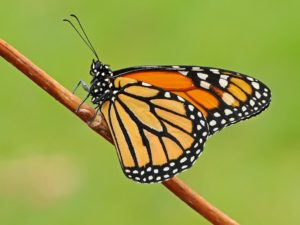
I soon learned that, like the Monarch, both of these butterflies migrate—though Florida, not of Mexico, is their destination. Seeing these three beautiful travelers awoke my imagination. I started to ask questions I’d barely ever thought about before.
For example: How many other migratory butterflies are out there? How many other insects? Most of all, how much migration is going on without our even noticing?
The answer to all these questions is: Plenty. The truth is that we’re absolutely surrounded by tiny creatures who migrate, and some of them are undertaking annual journeys of astonishing length.
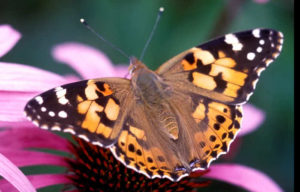
One of the most spectacular migrations belongs to the Painted Lady, the familiar species whose caterpillars are sold in kits, allowing people to “grow” and release their own butterflies. In the wild, Painted Ladies—which live on every continent except Antarctica and South America—are intrepid travelers.
From the species’ European breeding grounds (sometimes as far north as the Arctic Circle), for example, the butterflies head south on a breathtaking route across the Mediterranean Sea to the Sahara Desert and tropical Africa. This 9,000-mile roundtrip can involve six successive generations of butterflies, a kind of relay race where each generation somehow knows the leg it must travel before it breeds and passes the baton to the next.
Such a long, complex, and perilous journey would seem like an enormous hurdle to the species’ survival. Yet the Painted Lady is abundant over much of its range. Researchers in Israel, for example, estimated that one billion Ladies migrated across the country in just a couple of weeks in March 2019. (In certain spots, observers counted 25,000 or more butterflies passing by every hour!)
No one seems to know exactly how many different butterfly species migrate, though scientists have already identified hundreds of migratory species across the globe. They are joined by many beetles, grasshoppers, and other insects, some of which simply don’t seem big enough to take such long journeys.
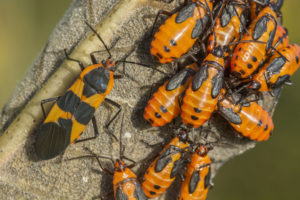
Take the Large Milkweed Bug, for example, which at about half an inch in length isn’t actually very large. Like the Monarch, it eats only milkweed. Since milkweed plants die back during northern winters, the cold-weather populations of Milkweed Bugs head to the southern U.S. and Mexico, where the plants thrive all year.
The insects that accrue the most impressive number of frequent-flyer miles, however, are the dragonflies. I was aware of dragonfly migration even as a child, when our yard in Cape Cod would be invaded late every August by large green-and-blue dragonflies. They were Green Darners, and for a few days they seemed to be everywhere. And then, in a flash, they were gone, heading south with the birds and Monarch Butterflies.
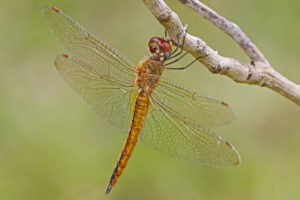
Another dragonfly makes perhaps the most epic journey of all insects: Pantala flavescens, found on every continent but Antarctica. Even its names celebrate its fame as a road warrior: It’s commonly called the Wandering Glider or Globe Skimmer, while the Latin Pantala means “All Wings.”
Here in North America, the Wandering Glider’s migration resembles the Large Milkweed Bug’s, a straightforward north-south movement down the continent. But the dragonfly’s quest on the other side of the Atlantic is something else again.
Over the course of multiple generations, populations of this tiny insect—it’s less than two inches long—make an 11,200-mile roundtrip trip from India all the way to East Africa and back again. To do so, individual dragonflies can travel nearly 4000 miles, crossing the Indian Ocean en route, which means flying hundreds of miles with no food, drink, or rest along the way. This is both the longest migration and the only transoceanic journey known among insects.
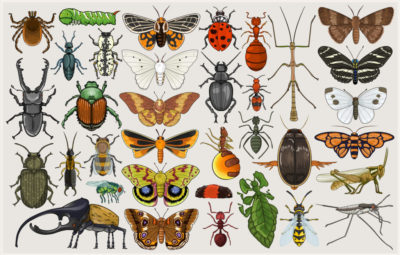
“Known among insects” is important here. Only in recent years have scientists come to realize how many insect species migrate, and (even more strikingly) how many individual insects do. A mind-boggling 2016 study published in Science, for example, estimated that 3.5 trillion insects migrate each year over southern England alone.
If that number is hard to comprehend (and of course it is), think of it the way mathematicians do: One million seconds passes in about 11.5 days, one billion in about 32 years, and one trillion in 32,000 years. So counting the insects flying over southern England, one bug per second, would take more than 100,000 years.
How about this: The average weight of an insect has been put at around 3 milligrams, or 1/10,000th of an ounce. The study’s authors estimated the combined weight of all those insects flying over England at 3200 tons. That’s 6,400,000 pounds of what the authors call “invisibles,” all moving from place to place while most of us aren’t paying attention.
Such vast migrations must have a direct impact on ecosystems, repeatedly bringing in waves of predators and prey, pollinators and plant eaters, diversity and diseases to new ecosystems. Yet very few studies have even attempted to measure that impact, much less the effect that climate change and other alterations in the environment might be having on insect migration.
I’m eager to learn much more about this fascinating subject. For now, whenever I spot a Monarch or Wandering Glider making its way south in the fall, I’m reminded of the vast mysteries these tiny creatures conceal…and humbled by how much we have yet to learn about them, and about the world we all share.
Copyright © 2021 by Joseph Wallace
